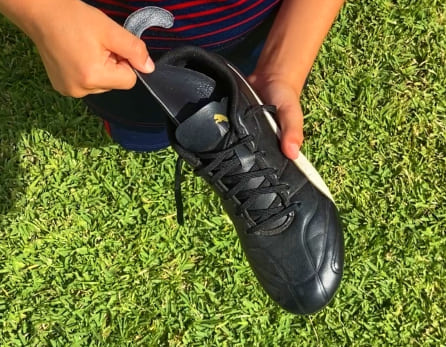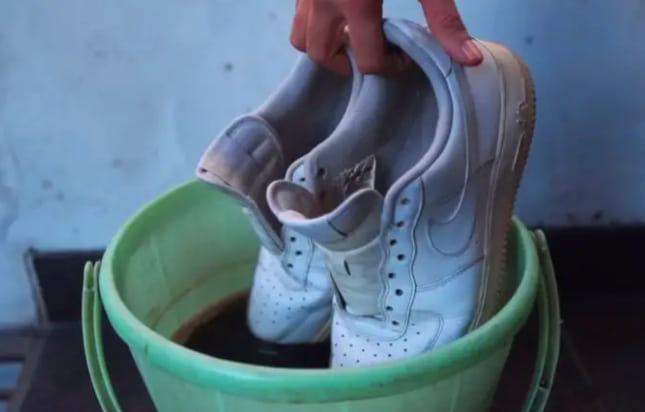As an avid runner and hiker, I log a lot of miles in my trusty sneakers. But after months of wear, I started noticing a funky odor coming from my shoes that just wouldn’t go away, no matter how much Febreze I sprayed. Turns out the source of the smell was my shoe insoles, which had absorbed all that sweat and bacteria built up from my active lifestyle.
While you can always replace insoles when they get too dirty, with some simple cleaning tricks, you can often revive them and extend their life. So I set out on a mission to research the best methods for cleaning all types of shoe insoles.
In this complete guide, I’ll share everything I learned about how to clean shoes insoles for removable & non-removable. You’ll also find tips for getting rid of stubborn odors, whitening dingy insoles, and keeping them fresh long-term. With just a bit of time and elbow grease, you can save money by restoring the insoles you already own.
How to Clean Shoes Insoles: Methods for Removable Insoles
The easiest type of insoles to clean are removable ones that can be fully taken out of your shoes. Here are the best methods for cleaning removable shoe insoles:
1. Hand Wash
For mild dirt,mix a solution of warm water and a small amount of gentle liquid hand soap or detergent. Allow the insoles to soak briefly and then scrub with a soft bristle toothbrush or fingernail brush. Rinse well with clean water to remove all the soap residue. Air dry completely before placing back in your shoes.
2. Machine Wash
For deeply soiled insoles, machine washing works best. Place the insoles in a laundry bag or pillowcase and wash on the gentle cycle with cold water. Either use a small amount of mild detergent, or for heavy odors try adding a 1⁄2 cup of distilled white vinegar as a natural deodorizer. Air dry the insoles completely before returning them to your shoes.
3. Baking Soda Scrub
For scent removal, make a paste by sprinkling baking soda on the insoles and rubbing it in with a damp brush. Let it sit briefly before rinsing – the baking soda will help absorb odors. For extra cleaning power, add a pinch of salt to the paste.
4. Hydrogen Peroxide
As a disinfectant, hydrogen peroxide can help kill bacteria that cause shoe odors. Mix a 50/50 solution of hydrogen peroxide and water in a spray bottle. Lightly spritz insoles and let sit 5-10 minutes before a final rinse.
5. UV Light Sanitizing
For a high-tech odor removal method, use a UV shoe sanitizer device. This disinfects insoles by exposing them to ultraviolet-C light, which eliminates odor-causing bacteria.
Cleaning Methods for Non-Removable Insoles
Many shoes like Converse, Keds, TOMS, ballet flats and certain dress shoes have insoles glued or stitched in place. While you can’t fully remove and wash these types of insoles, specialized cleaning methods allow you to freshen them up without damaging the shoes:
1. Remove Footbed Inserts if Possible
Some shoes like TOMS have a removable footbed insert placed on top of a non-removable base insole. Take out the insert and set aside so you can target the base layer.
2. Blot Stains With Mild Detergent
Mix a mild detergent like dish soap with warm water in a small bowl. Dip the corner of a clean rag or sponge into the solution and gently blot the surface of the insole. Focus on scrubbing stains and buildup in specific areas instead of soaking the whole insole.
3. Sprinkle With Baking Soda
Sprinkle a light coating of baking soda across the insole surface. The absorbent properties of baking soda help draw out odors and neutralize acid-based perspiration that eats away cushioning.
4. Allow to Sit Before Brushing Off
Let the baking soda sit for at least 30 minutes before brushing off with a clean, dry cloth or soft brush. The longer it sits, the more odor removal power it has. Sprinkling new batches of baking soda for a few days can help eliminate tough smells.
5. Disinfect With UV Light
Exposing non-removable insoles to UV light is an effective no-scrub disinfecting method. Devices like the SteriShoe Shoecase fit over the entire shoe and use ultraviolet rays to kill bacteria and fungus. A few cycles can sanitize insoles without getting them wet.
6. Air Dry Thoroughly
Remove any inserts and allow shoes to dry completely open and upright overnight. Never put on moist shoes or returning inserts too soon.
Keeping Insoles Fresh Long-Term
Once you’ve revived your insoles, you’ll want to keep them clean and odor-free going forward. Here are pro tips for maintaining freshness:
- Remove insoles and air out shoes completely after each wear. This prevents moisture buildup that bacteria thrives on.
- Sprinkle insoles lightly with baking soda or antibacterial powder after wear. These absorb moisture and neutralize odors.
- Use cedar shoe tree inserts to absorb excess moisture while shoes are not being worn. The cedar wood naturally deodorizes and prevents bacterial growth.
- Replace insoles roughly every 6-12 months for athletic shoes that see heavy use. Even with cleaning, materials eventually break down.
- Alternate between different pairs of shoes each day. Giving foam and fabrics a full 24 hours to air out reduces odor.
- Consider antimicrobial, moisture-wicking insoles. Certain high performance materials inhibit bacterial growth and prevent smells.
- Wash fabric shoe bags regularly that you store shoes in post-wear. They can hold onto odors if not cleaned.
Conclusion
Regularly cleaning your shoe insoles may add an extra step to your footwear care routine, but pays off in extended shoe life and improved hygiene.
For removable insoles, a thorough scrubbing with gentle detergent and disinfecting with vinegar or tea tree oil about once a month keeps them fresh. Allowing them to dry fully before replacing prevents moisture buildup.
With non-removable types, spot treating stains, sprinkling baking soda, and UV sanitizing enables you to clean without excess water exposure. Always let shoes dry open and upright before wearing again.
Treat your shoes right and they’ll support many more miles of happy walking or running. Don’t let dirty insoles cut your footwear enjoyment short or cause foot issues. Implementing these cleaning tips will keep your shoes fitting comfortably while looking and smelling their best.
Frequently Asked Questions About Cleaning Shoes Insoles
Can I put my insoles in the washing machine?
Yes, machine washing removable insoles is safe and effective as long as you use cold water on a gentle cycle. Placing them in a laundry bag provides extra protection.
How do I dry insoles quickly?
Air drying is best, but you can speed it up by placing insoles in front of a fan or using a hairdryer on a cool, low setting. Avoid high heat which can warp the shape.
What homemade solutions work to clean insoles?
A mix of mild soap and water, hydrogen peroxide, baking soda paste, or diluted white vinegar all work great. Avoid harsh chemicals which may degrade the materials.
How do I get rid of bad foot odor in insoles?
Disinfecting with UV light, hydrogen peroxide, or antibacterial sprays kills odor-causing bacteria. Baking soda, charcoal and cedar absorbers help remove built-up odors.
How often should I clean my insoles?
Every 1-2 weeks is ideal for active shoes. For casual shoes, every 2-3 months. Clean promptly whenever you notice odors developing.
Why do my white insoles turn yellow so fast?
Yellowing is caused by oxidation, dirt buildup, heat damage, and dye transfer. Using protective cleaners and whitening treatments can minimize it. But some discoloration is unavoidable over time.
Should I just replace my old insoles instead of cleaning them?
It depends on the extent of wear. Mildly dirty insoles can be revived through cleaning. But if they are badly worn out or compressed, replacement is better.

